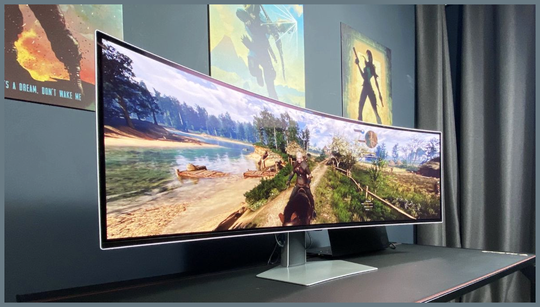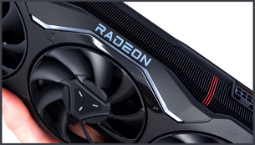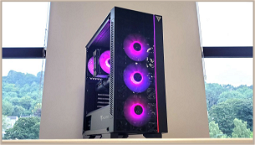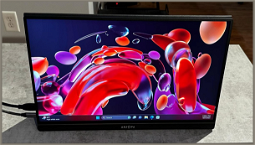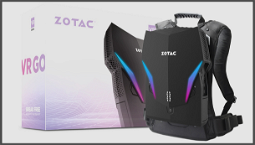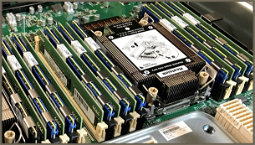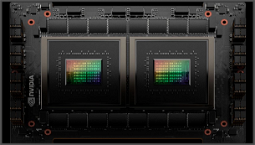The Samsung Odyssey OLED G9 G93SC
The Samsung Odyssey OLED G9 G93SC is a dream monitor for gamers, and its performance and image quality are top-notch. The build and engineering are also impressive, but accessing inputs and the power supply can be challenging. In terms of value, it’s hard to deny that this is one of the best gaming monitors around, but it’s certainly an expensive proposition – particularly if you already own a high-end gaming PC.
The Samsung Odyssey OLED G9 G93SC is more affordable than the G95SC model, which is the same monitor minus the smart TV and hub functionality. It shares a lot of similarities with its sibling, boasting a Samsung QD-OLED panel and a lot of the same specs and features. Naturally, there are some differences, but the G93SC is nevertheless one of the best gaming monitors for enthusiasts.
Here’s our Samsung Odyssey OLED G9 G93SC review:
OLED ultrawide gaming
The Samsung Odyssey OLED G9 G93SC is one of the big boys on the gaming monitor scene, with a sizeable 49-inch screen. It’s an ultrawide 32:9 aspect ratio that may not be ideal for all games, but the size and aspect ratio do wonders for immersion. It’s a dream for first-person shooters, but racing games can feel a little cramped when you’re used to the traditional 16:9 aspect ratio.
The panel inside is a Samsung QD-OLED panel, which is basically the best of the best when it comes to OLED technology. It boasts a resolution of 5120 x 1440, 250 nits brightness, 99% DCI-P3 color coverage, and a 1M:1 contrast ratio. These figures sound impressive on paper, but they’re best viewed in person – the image quality is simply stunning.
The contrast is deep and rich, and the per-pixel lighting control is excellent. The HDR performance is also impressive, delivering on the promise of high dynamic range without any obvious banding or other major issues. The glossy panel coating enhances contrast, and it looks fantastic both in games and when watching movies.
In bright ambient light, there may be a slight grey appearance that can take away from contrast, but it’s not a major issue for most users. There are also concerns about burn-in and image retention, but Samsung has implemented mitigation measures. Overall, this is an OLED panel that delivers on the promise of HDR – it’s a stunning piece of technology.
OLED ultrawide gaming performance
OLED panels are known for their excellent response times, and the Samsung Odyssey OLED G9 G93SC is no exception. At 240Hz, it offers the highest refresh rate available on the market right now, and the 0.03ms response time is impressive too. Put simply, this monitor feels incredibly smooth to use in games, and there’s very little motion blur to speak of.
Other specs include a 1000-nit peak brightness, which is plenty bright enough to ensure that dark scenes look properly dark. The 2500-nit peak brightness of the G95SC is overkill, and 1000 nits is more than enough to get the job done. On top of that, the color coverage and contrast are superb, and the 1M:1 contrast ratio delivers on its promise.
In terms of input lag, the Samsung Odyssey OLED G9 G93SC manages to avoid the pitfalls of an ultrawide panel size. It’s not the lowest input lag monitor around, but it’s certainly respectable, and there’s little reason to think it will negatively impact your performance in games.
The Samsung Odyssey OLED G9 G93SC feels like the complete package, delivering on performance and image quality in a way that feels truly special. It won’t be the right choice for those seeking crisp fonts or a versatile all-rounder monitor, but if you want an exceptional gaming experience, it’s hard to beat.
OLED ultrawide gaming concerns
There are some concerns about the Samsung Odyssey OLED G9 G93SC, which may not be dealbreakers for all users. Firstly, the input and power supply can be a little tricky to access, and the stand doesn’t really do anything to help. It’s not an issue if you plan to keep it on a desk, but it’s less convenient than a lot of other monitors.
In terms of performance, the 32:9 aspect ratio can be jarring in games that aren’t optimised for ultrawide resolutions, and this is a monitor best suited to first-person shooters and racing games. The pixel density is also a little low for non-gaming tasks, but that’s to be expected given the size.
Finally, there are concerns about burn-in and image retention. Again, this is a risk with any OLED monitor, but it’s something to be aware of if you’re spending a lot of money on one of these high-end panels.
